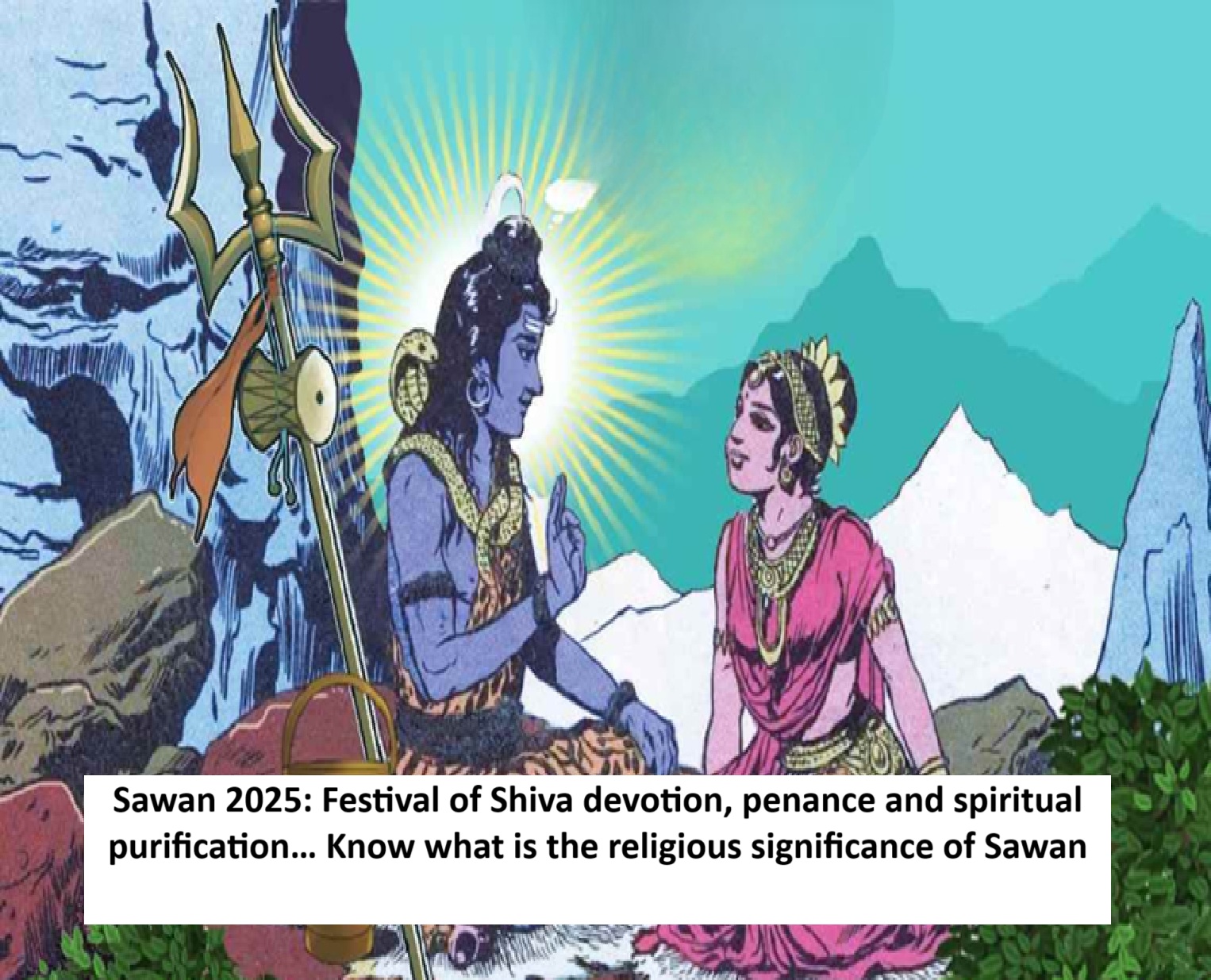
News Topical, Digital Desk : Sawan Monday fast is considered to be extremely virtuous and spiritually uplifting in Hinduism. It is not only a means of receiving the special blessings of Lord Shiva, but Sawan (sawan 2025 ka mahatva) is also a divine practice of devotion, restraint and self-purification.
The fast of Sawan Monday provides a sacred opportunity for devotees to connect with Shiva. Where the soul reaches closer to God through faith, discipline and dedication.
In this month of Sawan (sawan 2025), many mythological events and divine acts related to gods and goddesses happened, which are still a source of inspiration for devotion, faith and sadhana. Let us know some of the major events that happened in Sawan…
The story of Samudra Manthan and Halahal poison
The month of Sawan reminds us of the sacrifice and compassion of Lord Shiva. When the gods and demons churned the ocean together, the first thing that came out of the churning was a terrible poison called Halahal, which could destroy the entire creation.
At that time the whole universe was in trouble. Then Lord Shiva drank that poison himself for the welfare of all. But he did not swallow it, rather kept it in his throat. That is why his throat turned blue and he was called Neelkanth.
The holy month of Sawan is celebrated in memory of this sacrifice and love of Lord Shiva. Devotees offer Gangajal on Shivling in this month so that Shiva's penance gets cooled and his blessings remain on all of us.
The sacred story of the penance of Mother Parvati
The month of Sawan is considered a symbol of reverence, penance and unwavering devotion of Goddess Parvati. According to mythological belief, Goddess Sati had resolved to get Lord Shiva as her husband. After Sati's death, she was born as Parvati in the house of King Himalaya.
It was in the holy month of Sawan that Goddess Parvati pleased Lord Shiva by performing rigorous penance. Pleased with her devotion and love, Lord Shiva accepted her as his wife. Therefore, Sawan is considered to be the holy time for the reunion and marriage of Shiva-Parvati.
In this month, unmarried girls observe fast with the hope of getting a good husband. Whereas, married women worship Bholenath and Mata Parvati with devotion, praying for their good fortune and marital happiness.
Tradition of offering Ganga water
When the poison Halahal came out during the churning of the ocean, Lord Shiva swallowed it to protect the universe. But he stopped it in his throat and his throat turned blue. Since then, he is called Neelkanth.
But, the flames of poison were burning inside him. To extinguish that fire, the gods and sages offered him Ganga water. Ganga water is a symbol of coolness and it cooled down Shiva's heat.
Since then, it is a tradition that devotees anoint the Shivling with Gangajal in the month of Saavan. This is not just worship, but a feeling of love, devotion and gratitude which brings blessings of Lord Shiva.
Start of Kanwar Yatra
According to mythology, the Kanwar Yatra was started by Lord Parshuram, son of sage Jamadagni. It is believed that he set out with Gangajal from Garhmukteshwar Dham and after reaching Pura village in Uttar Pradesh, he anointed Lord Shiva.
Since then, this tradition started that in the holy month of Saavan, Shiva devotees fill Gangajal in Kaanvad and travel long distances and offer it to Lord Shiva and receive his blessings. This journey has become a living symbol of faith, penance and devotion.
Connect yourself with the peaceful form of Shiva
Sawan Somvar is not just a fast, it is a deep sadhana-festival of Shiva Bhakti. This month is a memory of Lord Shiva's sacrifice, compassion and grace. Worship done with reverence, restraint and faith connects the soul with God. Let us connect ourselves with the peace and love form of Shiva in this Sawan. Om Namah Shivaya.
Read More: Tritiya Tithi of Paush month on Tuesday, read auspicious and inauspicious yoga, time of Rahukaal
--Advertisement--

 Share
Share



